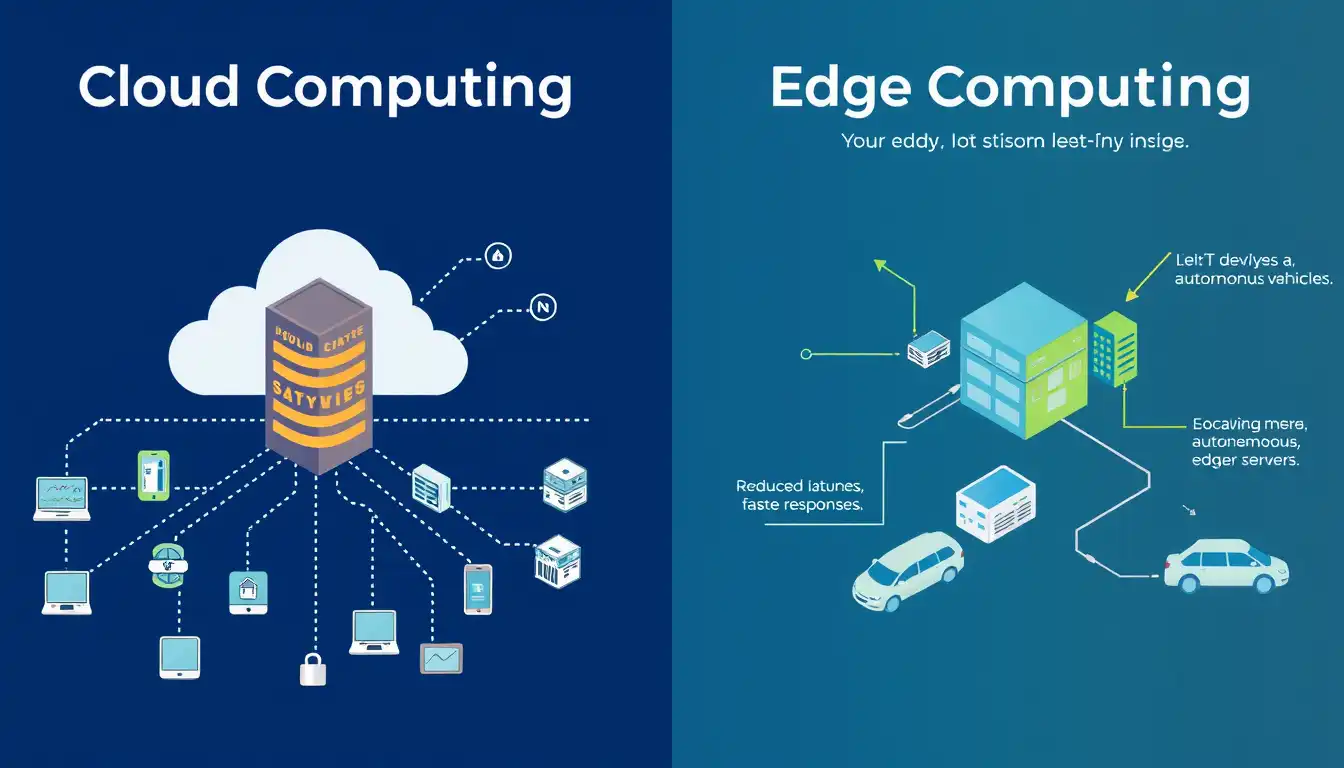Edge Computing vs. Cloud Computing: Exploring Them
Nowadays every small business wants to grow, that too without spending too much money. Hybrid cloud computing is a smart solution that gives the best combo of public and private cloud.
In simple words, keep important and sensitive data safe in private cloud, and run normal work like website or backups on public cloud. This will keep data safe and also save money.
The Basics of Cloud Computing
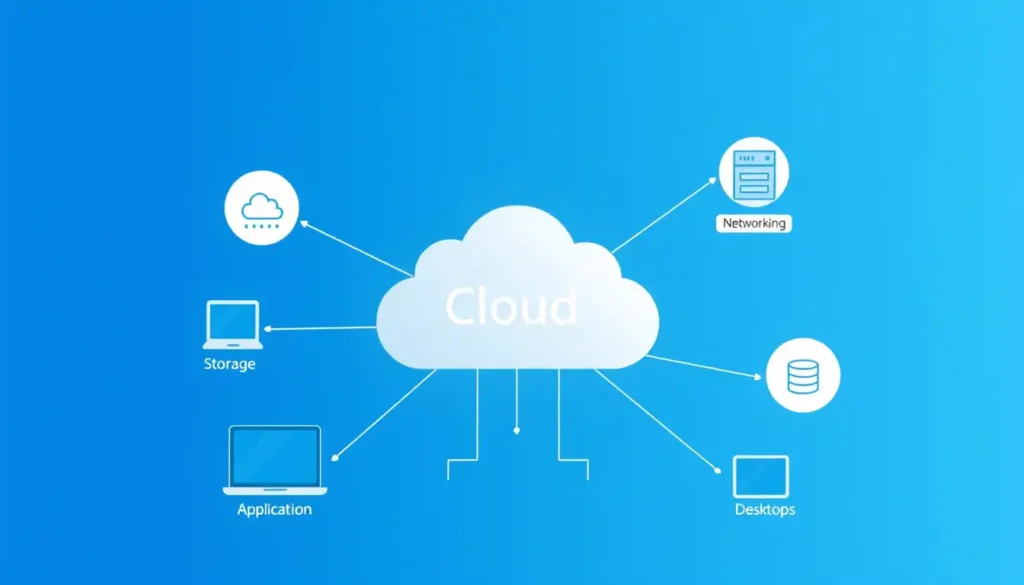
Cloud computing means storing and processing data on a server (large computer machine) at a distance via the internet. Think of it as if you are renting a small space of a big computer, which is somewhere outside your home.
Companies like Amazon Web Services (AWS), Microsoft Azure, and Google Cloud provide this service. The advantage of this is that you do not need any powerful computer or storage at your home. You can save files, run apps, or analyze data all from the internet.
Example:
When you save your photos in Google Drive Or stream a movie on Netflix
You can store files, run apps, or analyze data without needing powerful hardware at home. For example, when you save photos on Google Drive or stream movies on Netflix, you’re using cloud computing.
How Cloud Computing Works
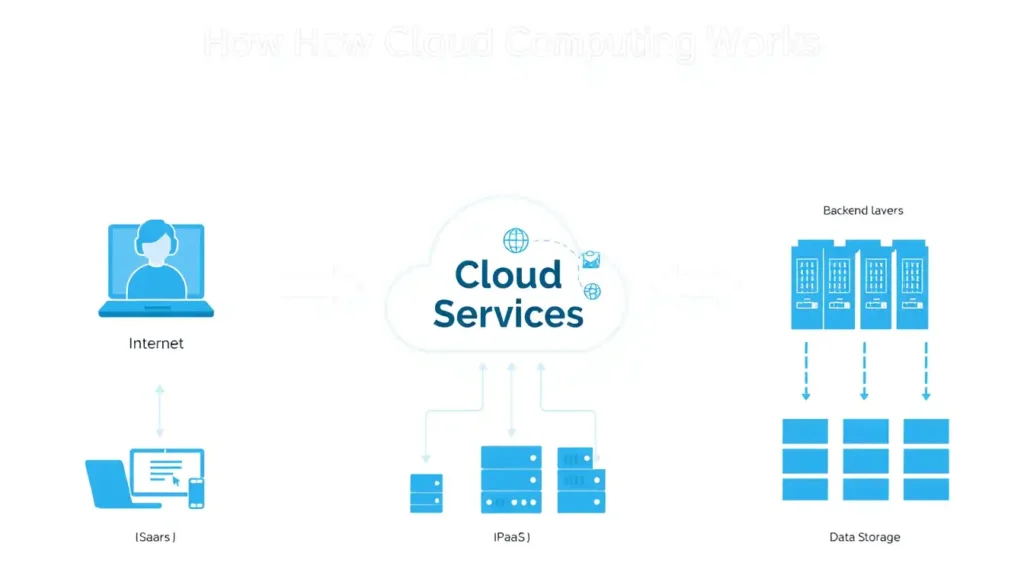
When you use cloud service, your data is sent to a data center server via the Internet. Data centers contain thousands of computers that save and process your data. As soon as you edit a document on Google Docs, your changes are immediately saved on Google’s servers.
As soon as you edit a document on Google Docs, your changes are immediately saved on Google’s servers. The cloud handles everything backup, security updates; everything happens automatically, you don’t need to maintain anything.
This system is best for tasks that don’t require an immediate response, like email, managing customer data, or backing up data. In this you can also scale up according to your storage or power needs, hence this is a budget-friendly solution for startups and individuals.
Benefits of Cloud Computing
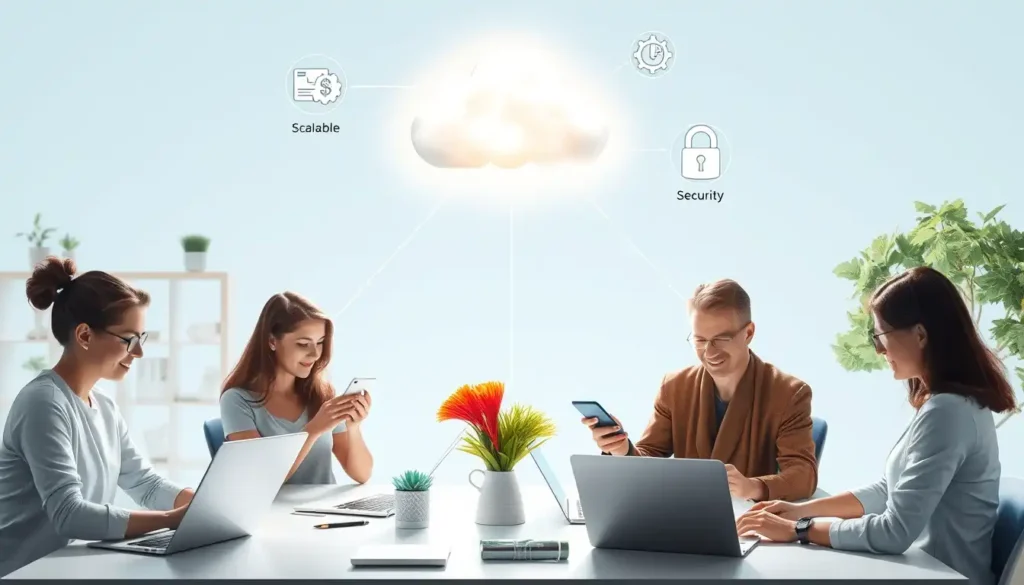
Cloud computing offers many advantages. First of all, you can use it from anywhere, you just need to have internet. You can work from your laptop in a cafe or from your phone at home. Secondly, it is cheaper because you only have to pay as much as you use it, there is no need to buy an expensive computer or server.
Thirdly, cloud services like Dropbox keep your data secure with encryption and regular updates. And the last advantage is that you can work together as a team, like in Microsoft 365 everyone can work together on the same document.
Understanding Edge Computing
Edge computing means processing the data where it is created, like on your phone, smart camera, or factory sensor. In this, the data is handled on the local device instead of sending it to a server at a door. Like a smart thermostat adjusts the temperature on its own without internet.
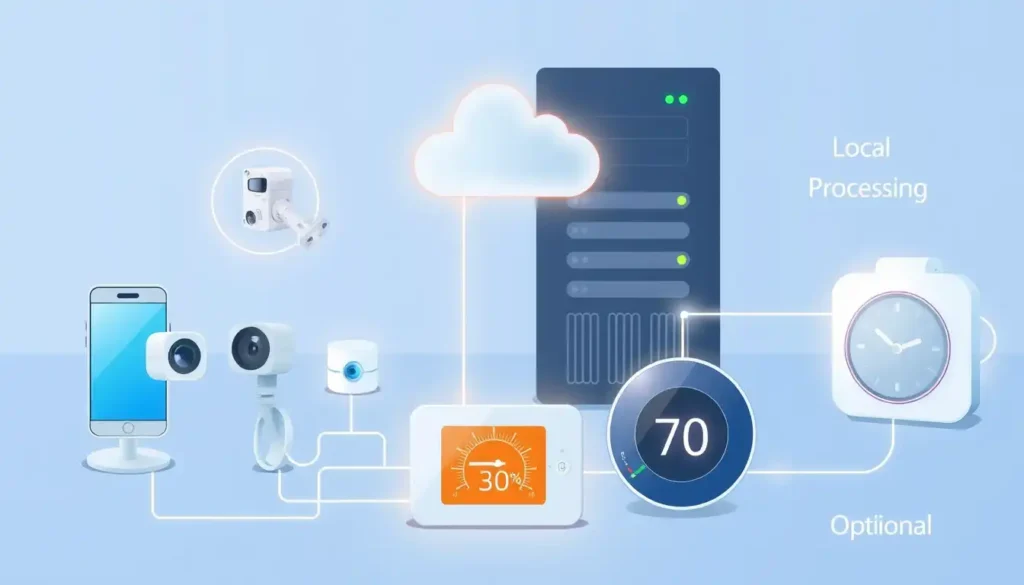
This saves time and also reduces internet load. This system is perfect for IoT devices like smartwatches, self-driving cars because these devices continuously create data and need a fast response. Edge computing makes them quick and smart.
How Edge Computing Works
In edge computing, devices like sensors or cameras have processors built into them that process the data immediately.
For an example, a security camera with edge computing capability can detect motion on its own and send you an immediate alert without sending the entire video to the cloud.
Some data can still go to the cloud for storage or deep analysis, but the most important work is done on local devices. This reduces the load on the internet and cloud servers.
In edge computing, devices like sensors or cameras have processors built into them that process the data immediately.
For an example, a security camera with edge computing capability can detect motion on its own and send you an immediate alert without sending the entire video to the cloud.
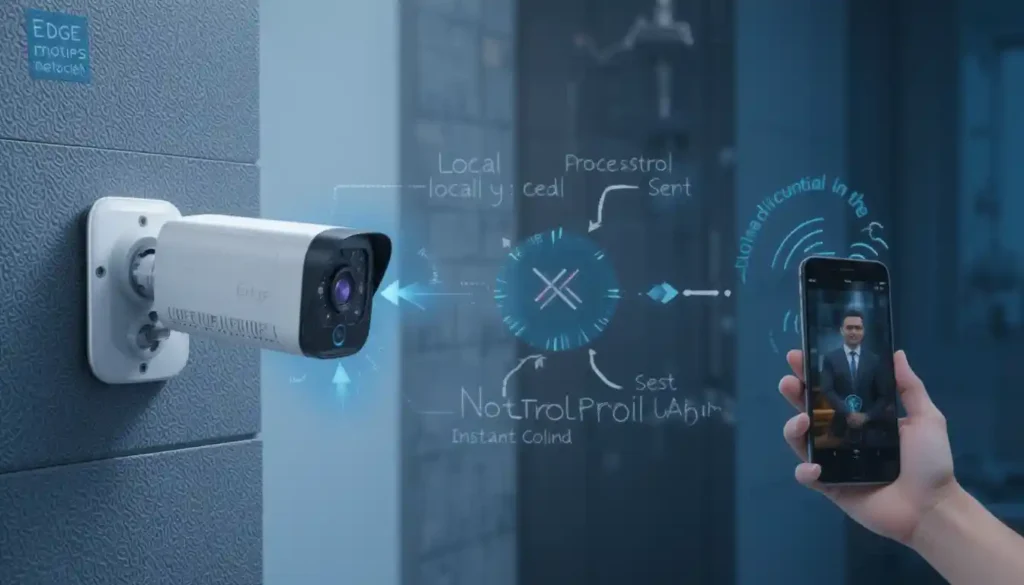
Some data can still go to the cloud for storage or deep analysis, but the most important work is done on local devices. This reduces the load on the internet and cloud servers.
Edge computing uses “edge devices” like gateways or small servers that are placed near the data. Just like in a factory, an edge server monitors the machines in real-time, so that if any problem occurs, its solution can be found immediately.
Benefits of Edge Computing
Edge computing works very fast. Since data is processed on the local device, latency (ie delay in sending and receiving data) is very low.
This is very important for apps like autonomous cars, because if there is a delay of even 1 second, an accident can happen. This also saves internet data (bandwidth), because more data does not have to be sent to the cloud.
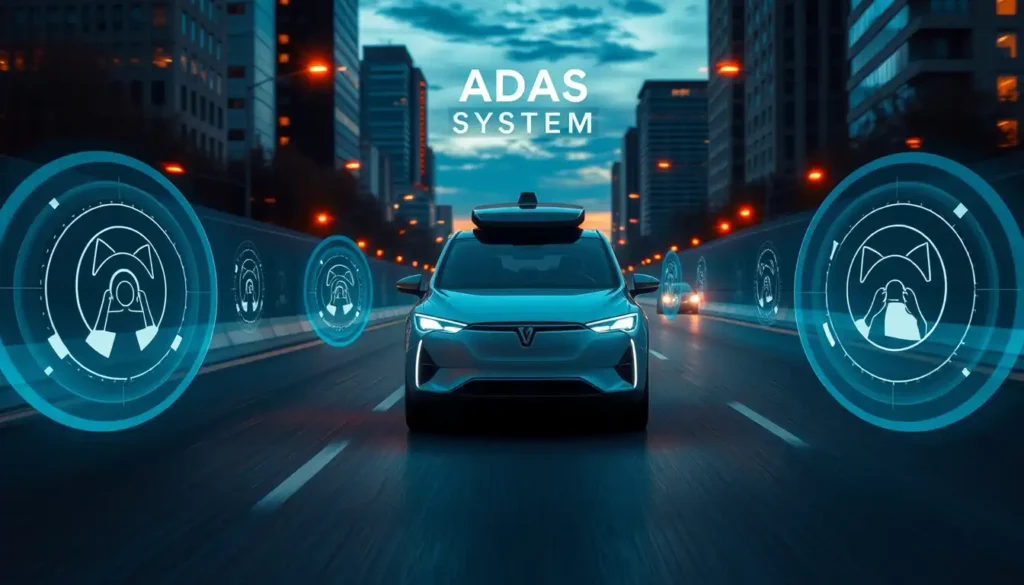
And even if the internet is weak or spotty, edge computing works, so it is reliable for remote areas as well. And the best thing is, it also strengthens privacy like medical data is kept on the local device only and is not sent to distant servers.
Key Differences Between Edge and Cloud Computing
Data Processing Location
The big difference is where the data is processed. In cloud computing, the data is processed on a large server that is perhaps thousands of miles away. For example, when you use Spotify, the song is streamed from the cloud data center.
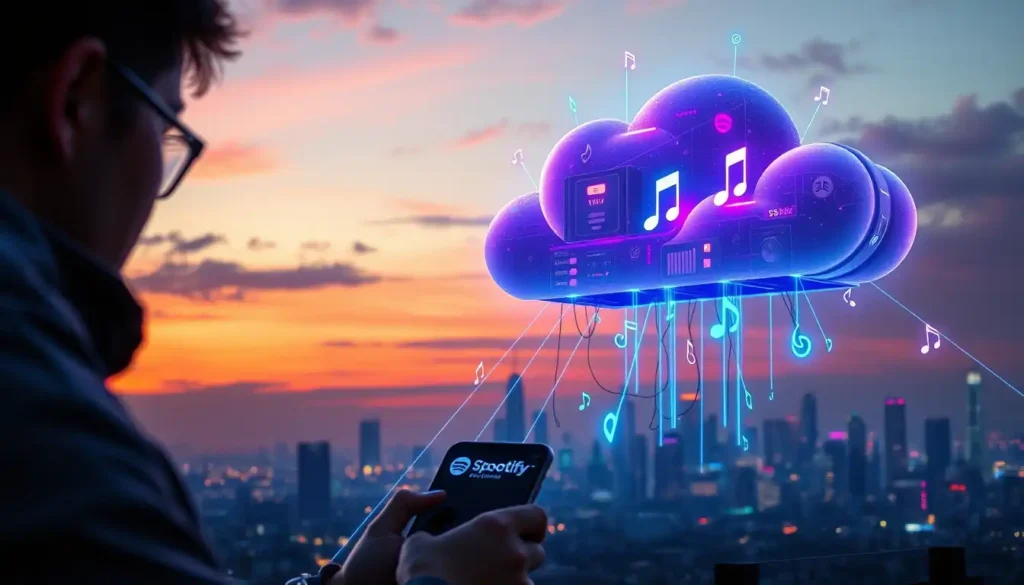
In edge computing, the data is processed on the local device. For example: Amazon Echo smart speaker understands your voice command on the device itself and only the necessary data is sent to the cloud. This is why edge computing is faster for real-time tasks.
Latency and Speed
Latency means how much time it takes for data to travel from one place to another and be processed. Cloud computing can have a lot of latency because data has to travel to distant servers. If you upload a large video to the cloud, it can take a few seconds or minutes.
Edge computing reduces latency because data is processed immediately where it comes from. For example, in gaming, edge computing makes online multiplayer games run smoothly because inputs are processed on the local device itself.
Bandwidth Usage
Cloud computing makes a lot of use of the internet because all the data first goes to the cloud, then comes back. Because of this, the network sometimes becomes slow, especially when IoT devices send data repeatedly.

Edge computing solves this problem. It processes the data at the local level and sends only the important information to the cloud. Just like the traffic sensors of a smart city analyze the data there itself, this makes the network less busy.
Scalability and Cost
Cloud computing is very scalable. If you need more storage or computing power, you can expand it in just a few clicks. This is perfect for businesses that are growing.
Example: If a startup is growing and its customers are increasing, then it can easily expand its cloud storage.
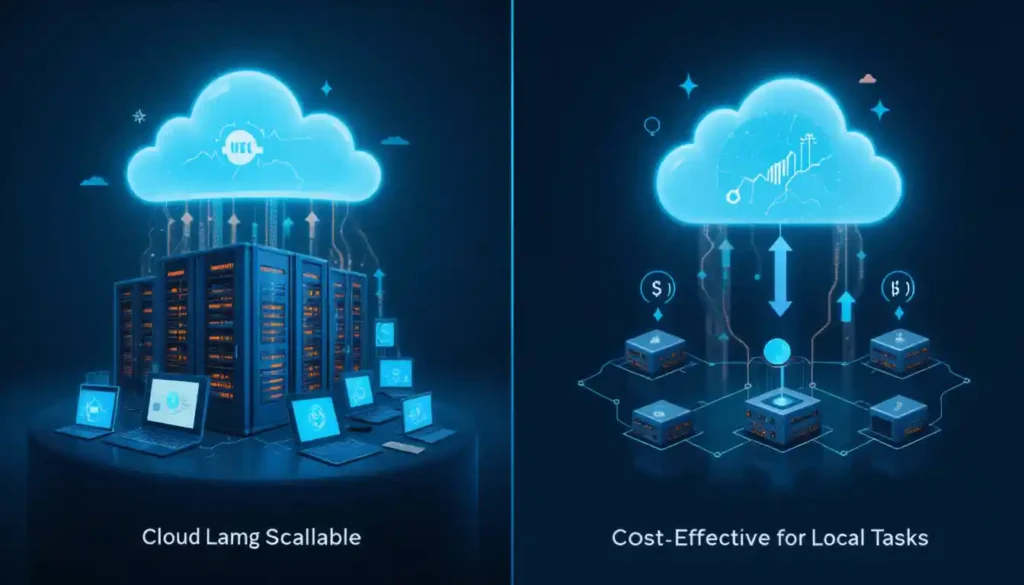
But edge computing does not have that much scalability, because it depends on local devices and their power is limited. Still, edge computing is cheaper for some tasks, because it does not use the cloud much and also requires less internet bandwidth.
Reliability and Connectivity
Cloud computing only works when you have a good internet connection.
Ex: If your Wi-Fi goes down, you won’t be able to use cloud services like Gmail. Whereas in edge computing, data is processed on local devices only, so it works even when the internet is weak or offline.
Ex: A mining site located in a village or remote area can be monitored using edge computing without internet.
Use Cases for Cloud Computing
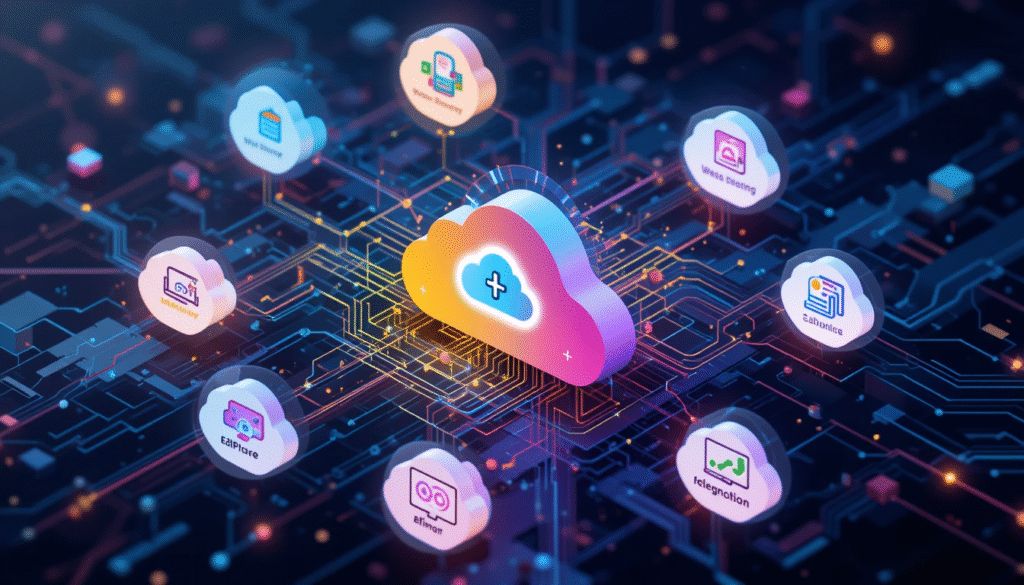
Business Applications
Cloud computing is running many business tools these days. Customer Relationship Management tools like Salesforce (CRM) work on the cloud, allowing teams to manage their client data from anywhere. Cloud based email services like Outlook allow people to work easily from different locations.
These tools are cheap and easy to set up, so these tools have become quite popular for small companies.
Data Storage and Backup
Cloud computing is also used to store large files and data. Companies use it for backup, old data (archives) or data analysis.
Just like a hospital stores the records of its patients in the cloud so that the data is retrieved quickly and is also safe. Services like Google Cloud Storage give you unlimited space and automatic backup, which keeps the data secure.
Software Development
Developers also use cloud platforms to build and test apps. For example, AWS (Amazon Web Services) provides such tools that make coding, testing and launching software possible without setting up your own local server.
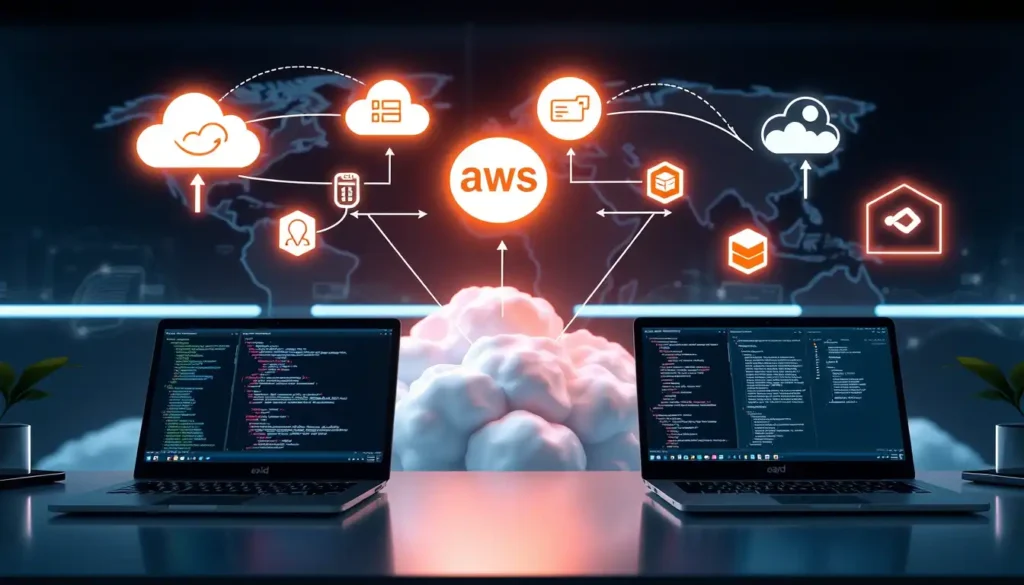
This saves both time and money, because developers do not need to buy expensive machines. In the cloud environment, teams can also work together.
Use Cases for Edge Computing
Internet of Things (IoT) Devices
Edge computing is a game changer for IoT devices. Like fitness trackers or home security systems these smart devices process their data locally to get instant results.
For example, a smart doorbell detects a visitor using edge computing and sends an alert in just a few milliseconds. This gives the user quick information and also improves the experience.
Real-Time Analytics
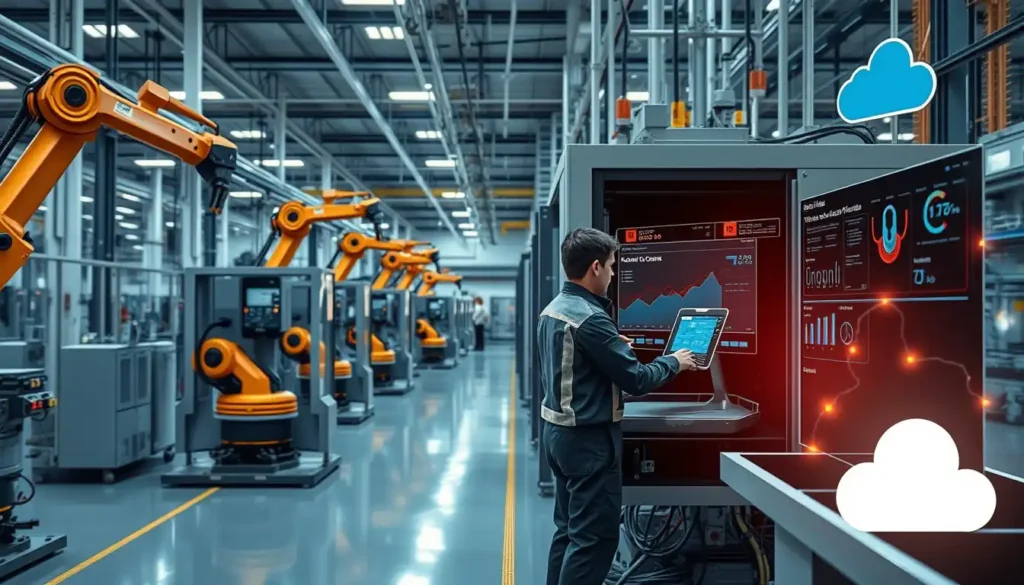
In work like manufacturing, edge computing is used for real-time analytics. Like a factory sensors can detect a machine problem instantly, which prevents major losses. Edge computing means that data is processed immediately where it is generated near a machine or camera device. This eliminates the need to send data to the cloud and decisions can be taken immediately without wasting time.
Autonomous Vehicles
Self-driving cars use edge computing to take quick decisions without wasting time.
The car’s sensors process the road condition immediately there itself, which helps them avoid obstacles on the way.
If this data were sent to the cloud, it would take some time – so everything is processed locally. Edge computing improves both safety and performance in such smart systems.
When to Use Cloud Computing
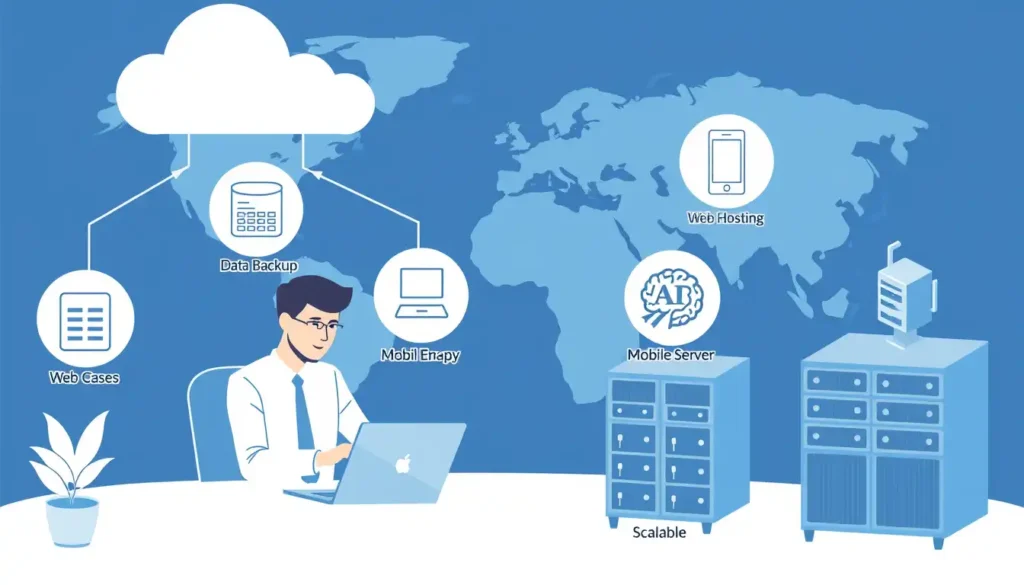
Cloud computing is best for jobs where more storage, scalability, or teamwork is needed. For example, a content creator who stores his videos in the cloud, or a company that runs an online store worldwide the cloud is perfect for them because it adjusts easily.
The cloud is also good for people who don’t want to buy local hardware, or who need to access data from multiple locations.
When to Use Edge Computing
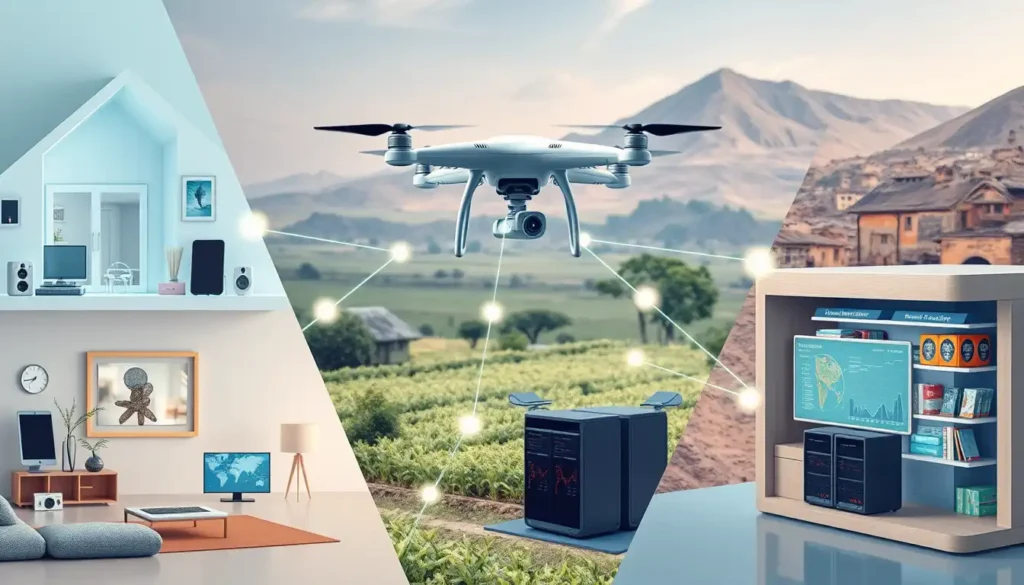
Edge computing is best when speed and very low latency are needed. Edge computing is very useful in smart homes, autonomous drones, or retail stores where live data needs to be viewed.
It is also good for places where the internet is weak, such as rural areas or seaside locations (offshore sites).
Combining Edge and Cloud
Many businesses use both edge and cloud computing. Edge computing does the work immediately, and in the cloud the data is saved and analyzed for future use.
For example, a smart city might instantly control traffic lights using edge computing, and analyze traffic data for an entire month using cloud computing. This type of hybrid setup helps both with speed and smart planning.
Conclusion
Edge computing and cloud computing are important, but they do different things. Cloud computing gives you more storage, makes it easier to work with a team, and backs up data. Edge computing is best suited for tasks that require speed and an immediate response like IoT devices or self-driving cars. If you understand the advantages of both, then you can choose the right technology for your work or you can get even better results by mixing both.
In the future, when technology advances further, the edge and cloud together will make the world smarter and faster.
FAQ’s
1. What is the difference between cloud computing and edge computing?
Cloud computing processes data in centralized data centers, while edge computing processes data closer to the source (like IoT devices).
2. Is edge computing replacing cloud computing?
No, edge computing complements cloud computing; both are used together to optimize performance and scalability.
3. What is the primary advantage of edge computing over cloud computing?
Edge computing reduces latency and bandwidth usage by processing data locally.
4. What are the disadvantages of edge computing?
It can be more complex to manage, and may have limited processing power and security risks.
5. Does AWS use edge computing?
Yes, AWS offers edge computing through services like AWS Lambda@Edge and AWS IoT Greengrass.
6. What are examples of edge computing?
Smart traffic lights, autonomous vehicles, and industrial IoT sensors are common edge computing examples.
